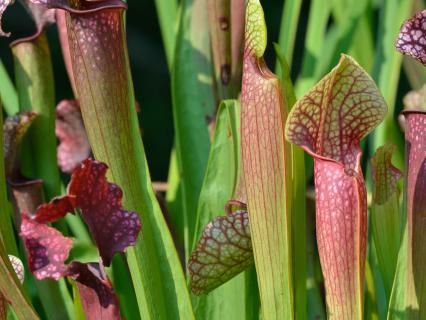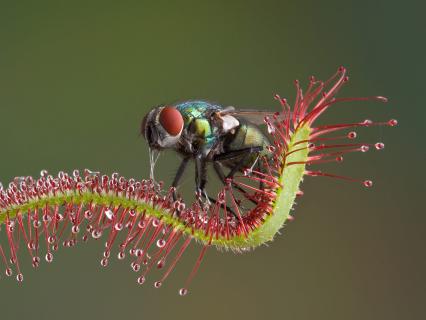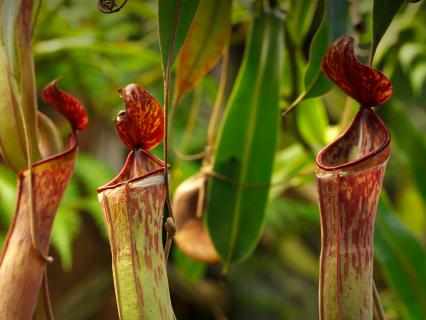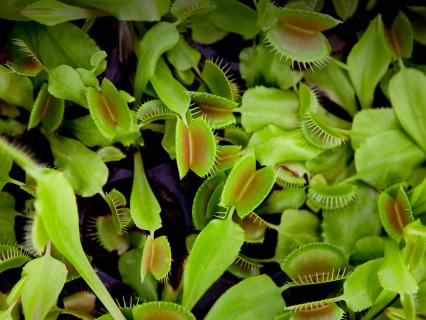
Carnivorous Plants
DEFINING CHARACTERISTICS:
Attract and kill animals (typically insects)
Produce digestive enzymes or harbor beneficial microorganisms that dissolve prey
Clearly benefit from nutrients they absorb from their prey
Like other plants, get energy from the sun
They are the perfect hunters: patient, alluring, and astonishingly efficient killers. They wait for their victims to come to them, incapacitate their unsuspecting prey, and then consume them—all while firmly rooted in one spot. For carnivorous plants—like those found in the San Diego Zoo’s Bog Garden—it’s not only easy being green, it’s downright convenient!
POOR SOIL
Carnivorous plant habitats vary widely, from acid bogs to alkaline pine barrens, from frigid streams of melting snow to steamy tropical rain forests. All carnivorous plants have one thing in common, though: extremely poor, almost sterile soil, where many plants would never survive, let alone thrive. Under ordinary circumstances, essential nutrients become available as healthy populations of bacteria in the soil decompose plant and animal material. But some habitats make it difficult for soil bacteria to do their job. For example, flooding prevents a healthy flow of oxygen into the soil, and some very waterlogged soils are referred to as "wet deserts."
FEED ME
What's a plant to do when it finds itself in a "wet desert"? Most species can't survive, but some botanical wonders—the carnivorous plants—have found ways to get the nutrients they need. They trap insects and dissolve them; the liquefied victims provide carnivorous plants with the vital nutrients that are missing from the soil—nutrients that power flower, seed, and offshoot production. For a carnivorous plant, roots merely draw in water and keep it anchored in place.
PREY
The most common prey for carnivorous plants are small insects such as gnats, flies, bees, moths, beetles, and ants. And the ways in which these unlucky creatures ended up as a meal are marvels of adaptation. There are a number of enticements in carnivorous plants’ bag of bug-grabbing tricks. To draw them close enough to catch, the plants entice their victims with bright colors and a variety of scents. With smells, though, beauty is in the nose of the beholder. Some carnivorous plants emit sweet, flowery scents; others can smell like carcasses or even cat urine.
OUR COLLECTION
The Zoo's Bog Garden is inside a greenhouse, across from Fossil Portal and the the entrance to Elephant Odyssey. Peer through the clear plexiglass panels to see American pitcher plants and other carnivorous plants. The Bog Garden's soil is a mix of sand, gravel, and acidic peat moss. To mimic the rainy conditions that the plants are used to, landscapers saturate the soil every four days with deionized water, filtered to remove the salts and minerals found in San Diego's water supply. Spring, summer, and fall are the best times to view the American pitcher plants at the Zoo, as they are dormant during the winter.





